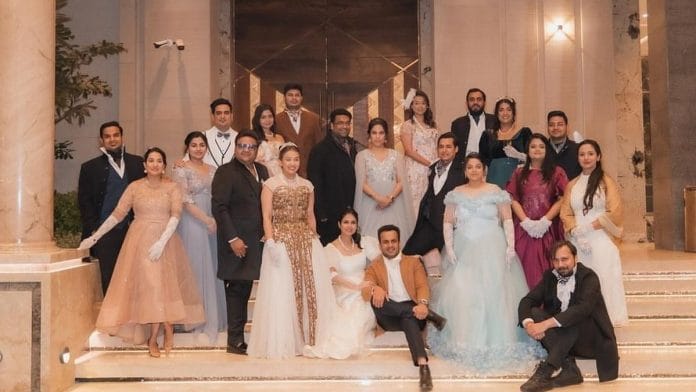Kanpur: Rahul Bhatia answers his phone, flashing his bedazzled Prada cover. The call is to inform him of a fellow Kanpur businessman’s latest splurge—a Rolex Daytona watch worth Rs 43 lakh.
Like many others in Kanpur, the flamboyant Rolex-buying businessman’s family made their fortunes supplying paan masala products across the country. Bhatia, on the other hand, is a savvy entrepreneur who has capitalised on Kanpur’s newfound wealth by opening DreamKarz, a luxury car showroom.
“People in Kanpur now know what luxury is. Earlier generations didn’t understand these things,” Bhatia, who’s in his 40s, said. “But money’s never a problem. Every second guy here from a big family has money.”
Bhatia holds court at his showroom-cum-office in Swaroop Nagar, one of the city’s poshest neighbourhoods, dotted with sprawling bungalows and high walls.
Kanpur has always had plenty of wealth, but it has never been this ostentatious. This change came about with the new generation of paan masala and other scions taking charge. They’ve travelled the world, studied in elite universities in America and England, partied with A-listers, and have come home to Kanpur to take over the family businesses. But Kanpur still has to catch up with their demand for exciting events and luxe venues for outings, unlike other Tier-2 cities such as Indore, where the wealthy play.
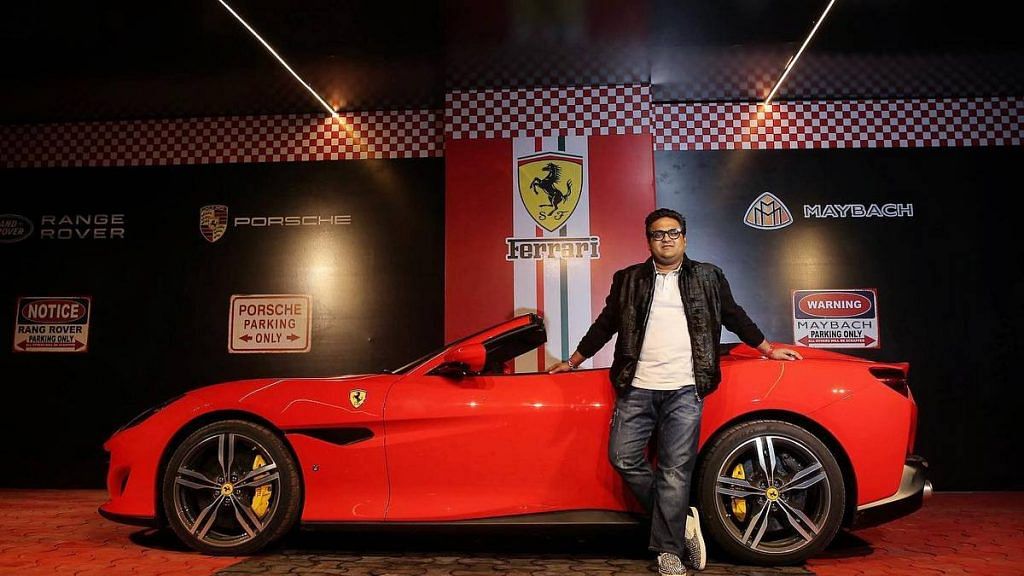
Money has flowed in Kanpur since the 1980s, when families from various parts of Uttar Pradesh entered the fray as paan masala manufacturers and leather exporters. But they put their heads down and focused on work. Up until a generation ago, frugality was the hallmark of Kanpur, the industrial heart of the British Raj, dubbed the ‘Manchester of the East. Now, that’s a distant memory. The penny-pinching old Kanpur has been replaced by a bevy of luxury vehicles, young people clad exclusively in designer labels, and a nascent farmhouse party circuit.
“I can tell you one thing about Kanpur. They think that if the Ambanis are flaunting wealth—why can’t they?” said a resident who grew up in Kanpur and has watched it change.
Apartments in Emerald Garden, a high-rise complex in Swaroop Nagar, are now priced upwards of Rs 4 crore. Five years ago, they were barely Rs 1 crore.
Kanpur’s elite social circles and their parties are shrouded in secrecy. They function almost like an underground society with an omerta-like code.
Also Read: ‘Dry fruits and paan money’ is here—NCR condos have a new rich vs old rich problem
Getaways & homecomings
For all its wealth–old and new—Kanpur still doesn’t have the markers of metropolitanism, unlike some other Tier-2 cities. Indore, for example, boasts pubs, tech hubs, and the palace-like Phoenix Citadel mall. Kanpur’s wealthy residents still go to Lucknow and Delhi for shopping sprees. The airport has only two daily flights, and many Kanpur-ites complain about a dearth of restaurants and clubs.
But still, even after spending crores on a foreign education, many return to their hometown, usually because they have family businesses to run.
“There is no doubt that Kanpur is a small town, and needs to adjust to the fast pace at which the rest of the world runs,” said a 40-something businessman whose family owns a spice brand. He returned home after an MBA in a prestigious UK university, leaving behind a job in London.
The cars come out on Saturday night when there’s a party. That’s when the sports cars show up. And then the conversations about which car you have begin
Rahul Bhatia, owner of DreamKarz
He’s far from the only one. Another businessman, who did not wish to be named, went to boarding school, received a university degree from abroad, spent a few years working in Delhi, and then returned to Kanpur to manage his father’s business. However, now, he’s looking to move out.
“There’s no room for personal growth in Kanpur. There are hardly any parks, open spaces,” he said, seated in the Cawnpore Club. The colonial-era establishment is a haven for the old Kanpur elite, equivalent to Delhi’s Gymkhana Club and Kolkata’s Tollygunge Club.
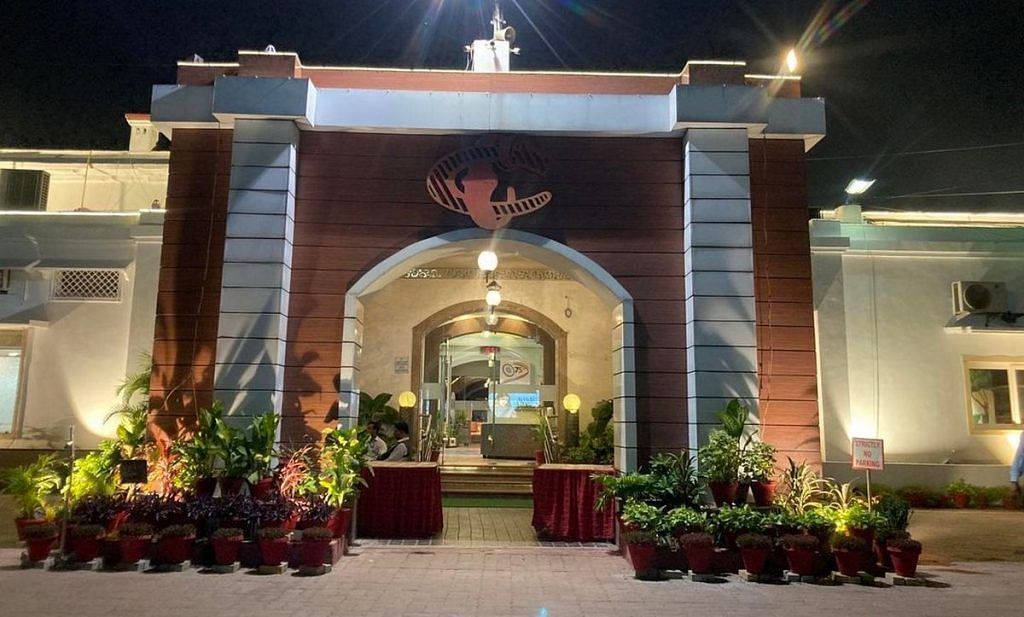
It sits in the expansive, clean cantonment area, a sharp contrast to the rest of the city—which consists largely of narrow gullies choked by two- and three-wheelers, flies hovering around mithais in roadside eateries, and a skyline dominated by mills and factories.
“I’m aware of my privilege—my father has the money to provide me with a base in Mumbai,” said the businessman. As a child, he was sent down South to a school because his family didn’t want him to grow up with the “complexes” that supposedly accompany being from a “small town.”
Kanpur’s culture of extravagance began with the paan masala industrialists, who still fuel much of the city’s wealth. But the new generation is diversifying into more socially acceptable businesses, with real-estate being a hot favourite.
Lifestyles of the rich & cautious
The wealthy in Kanpur operate with an easy confidence, fully aware of their hold over the city. But they prefer to stick to their own privileged enclaves and social spheres.
“As long as you filter out your social circle, it’s okay,” said the son of a leather industrialist who did not want to be named. “Everyone here knows each other. We go out, we meet people, we party.”
Flying to Delhi to spend the weekend clubbing is a fairly frequent occurrence.
Bhatia prides himself on bringing luxury consciousness to Kanpur. He only sells top-tier vehicles—Maseratis, Lamborghinis, Ferraris, Mercedes and BMWs. None of that low-end stuff, he said. Not even a Fortuner.
“I sold my first Lamborghini in 2016. Only when I introduce cars to people, do they buy them,” he added.
Bhatia’s family owns three petrol pumps, but DreamKarz’s success has allowed him to break away from the family business. He plans to pass the reins of his budding empire to his son, who is currently at university in Singapore.
Though Bhatia can’t provide an exact figure, he estimates that he sold over 40 cars last year, with even higher sales the year before. Since his first sale in 2016, he has sold an average of 12 Porsches a year. His best year was 2022, he said, but the market has been down since then. Yet, even the day after demonetisation, Bhatia claims to have sold a multi-crore Maserati.
What’s worked in his favour is socialising within the same circles as his clients. The trust factor is of paramount importance when it comes to doing business. “People don’t want any hassle. And they don’t want to talk to anyone who’s beneath them,” he said. “They come to me for everything.”
A lot of our friends’ houses have been raided over the years. Many years ago, mine was too. They didn’t find anything though.
-College-going son of a Kanpur businessman
At the corporate office-cum-mini showroom of DreamKarz, only a single car is parked. A Mercedes A-35 that belongs to Bhatia’s son. With a personal security officer riding shotgun, Bhatia’s son gingerly backs out into narrow street, barely wide enough for the car.
The winding lanes of Kanpur, jammed with auto-rickshaws and disrupted by metro-construction, are no place for luxury vehicles. Most are only brought out for special occasions.
“The cars come out on Saturday night when there’s a party. That’s when the sports cars show up,” Bhatia said. “And then the conversations about which car you have begin.”
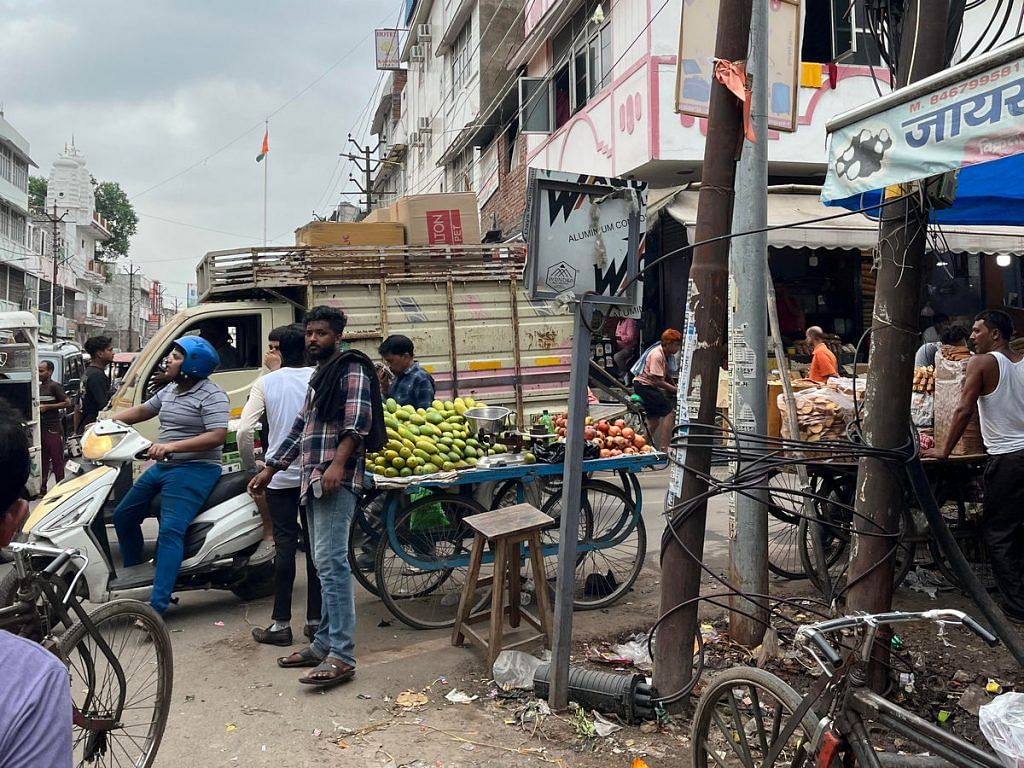
These parties, however, are shrouded in secrecy. They function almost like an underground society with an omerta-like code. A wealthy young Kanpur businessman, asking not to be named, said he recently attended a cricket match get-together at a friend’s place—a paan masala supplier. It was a casual evening but there was one unbreakable rule: no shop talk. It’s a strict don’t ask, don’t tell policy.
“Even if I asked (about business), I knew he wouldn’t tell me,” the businessman said. “You can’t have someone who can rat you out. And loyalty can be bought.”
There’s a constant fear, especially among those who run paan masala businesses, of being raided. If a raid does happen, or even if there are whispers of one, the flaunting of wealth comes to a temporary halt.
But even at the best of times, there are only a handful of effective channels for the rich to showcase their wealth: cars, farmhouses, and now, weddings.
Kanpur takes its celebrations seriously. Card parties start a month before Diwali, and Christmas parties involve ludicrously tall Christmas trees. Celebrities like Sukhbir, Neil Nitin Mukesh, and Ameesha Patel have made appearances.
Gala weddings, ‘Arab nights’, Kohinoor cakes
Lazing buffaloes and nodding crops dominate the landscape of Bithoor, some 16 kilometres from Kanpur city. But amid this pastoral expanse rises a behemoth from another world: Shree Ganga Valley, a wedding venue owned by Sharat Khemka.
Everything about it screams extravagance, from the marble-stone-glass façade and domed pillars at the entrance to the abstract golden statue and sleek carriage (even if it’s missing a horse) on the grounds.
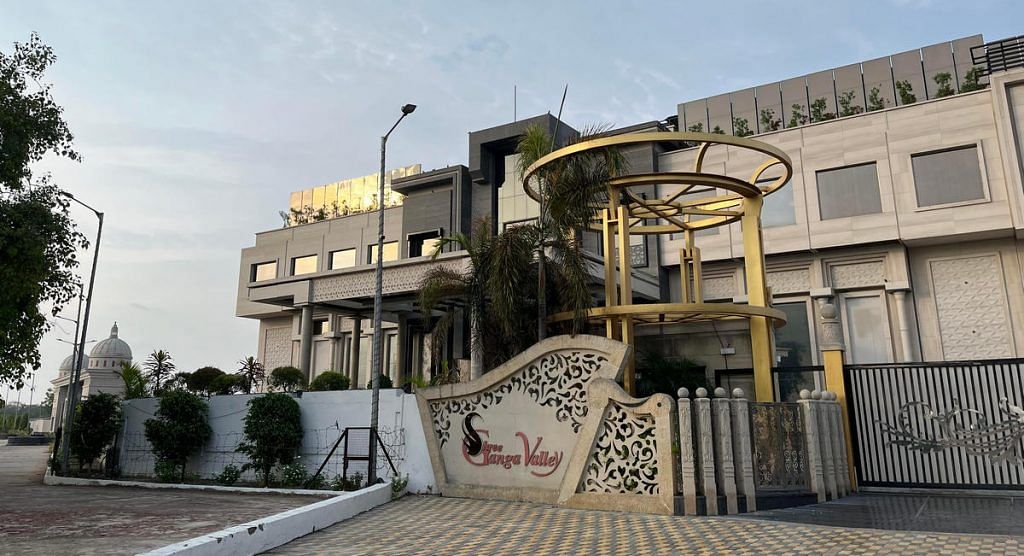
Many of Kanpur’s business families own farmhouses in Bithoor, but the Khemkas have taken it to the next level, transforming their property into an event space of extreme proportions. It has a 16,000 square foot banquet hall, the largest in Uttar Pradesh. It’s an overwhelmingly glitzy room with black marble doorways, a number of chandeliers, and an engraved marble ceiling. Made to accommodate a thousand people, it’s also pillarless.
Their Instagram page features a video from Punjabi rapper Mika Singh, profusely thanking Sharat Khemka and his wife Radhica for their hospitality.
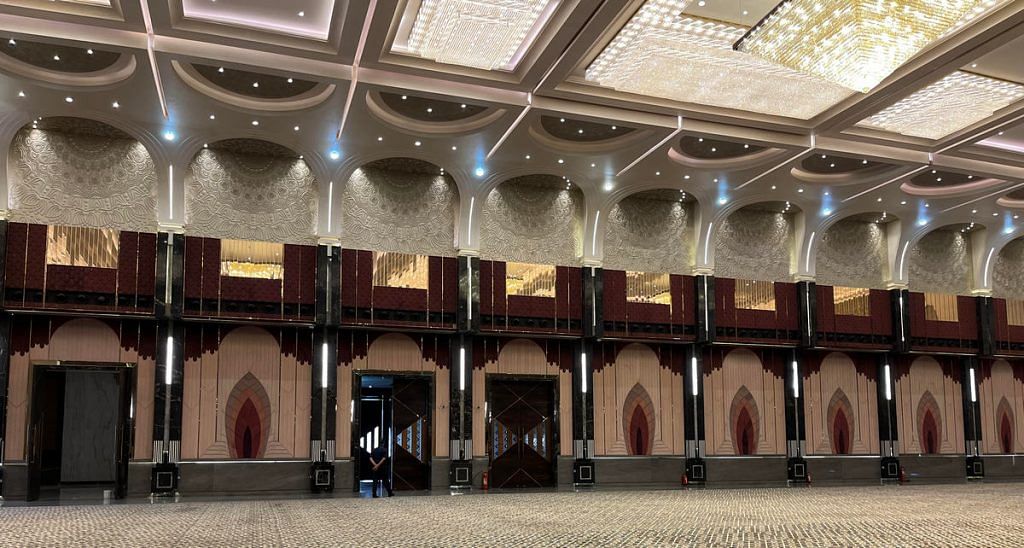
Kanpur takes its celebrations seriously. Card parties start a month before Diwali, and Christmas parties involve ludicrously tall Christmas trees. Celebrities like Sukhbir, Neil Nitin Mukesh, and Ameesha Patel have made appearances. One member of Kanpur’s swish set recounted a ‘desert-themed’ 25th anniversary party for which real sand was transported from Jaisalmer. About 500-600 people attended.
“That is small for Kanpur,” she laughed.
Weddings in Kanpur, as across the country, are primary avenues for ostentation. At one such celebration last year, a chef from Japan was flown in to man the Japanese cuisine counter. There was also a collaboration with Indian Accent, one of Delhi’s most coveted restaurants.
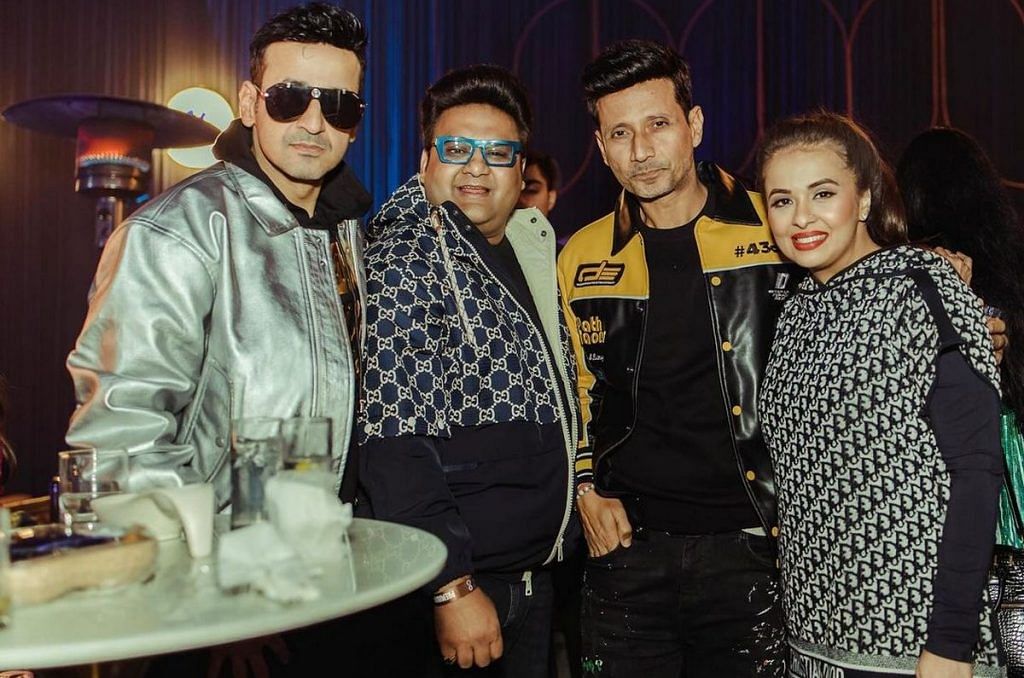
‘Arab Nights’ are a popular theme for cocktail parties—with dimly lit rooms and stages dominated by LED screens. Feathers as centrepieces and even for chairs are currently fashionable.
“The set-ups always come from Delhi,” said a businessman who regularly attends weddings here.
For destination weddings, it’s usually a toss-up between Agra and Koh Samui. Jaipur serves as an in-between.
Earlier this month, labourers at Shree Ganga Valley had been working round the clock for 17 days. The clients were the Agrawals of JJ Sarees, a Kanpur-based sari manufacturer. Despite the banquet hall, a massive parallel structure, with glaring red-strobe lights was being built, slated to be torn down immediately after the festivities.
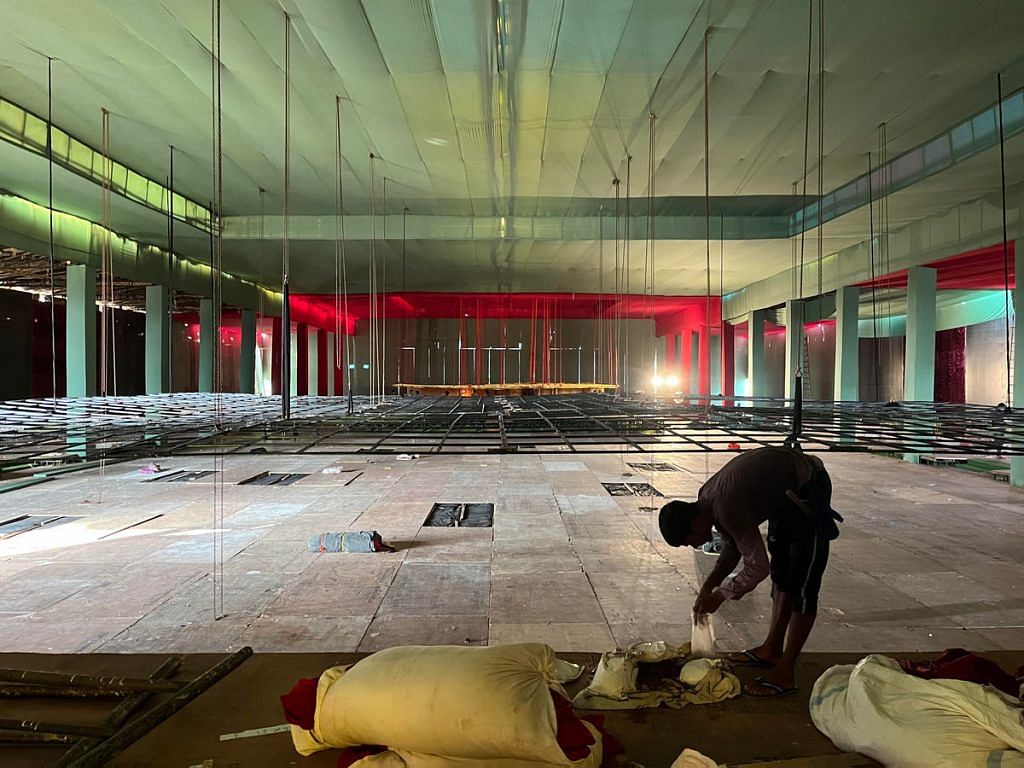
“Our client told us that they wanted something no one has ever seen before. That was the brief they gave us,” said a wedding planner who works with Delhi’s Devika Sakhuja, requesting anonymity. “It’s going to be completely maximalist. We’ve been able to implement designs that have been saved on our Pinterest boards for ages.”
Their mood-board resembled the set of a period-drama more than a wedding function. Set in a cavernous dark room, the couches are low-slung and velvet, set in deep shades of red and green. Peacock motifs have been used in abundance.
On average, a big fat Kanpur wedding hosts about 1,500 people. These events, the wedding planner said, are a radically different experience to what they usually see in metropolitan cities like Delhi and Mumbai, where clients generally seek tasteful and successful parties without much deviation from the norm.
Call it childhood attachment or whatever, but we like it here. And we travel a lot
-a wealthy Kanpur businessman’s son
In Kanpur, people are more open to experimenting. For instance, Goldee Exclusive, a city wedding planner, recently advertised their latest creation, the Kohinoor Cake—a three-tier wedding confection encased in a revolving diamond-shaped structure.
Shree Ganga Valley attracts clients not just from Kanpur, but also from nearby cities like Lucknow and Kannauj. Renting the banquet hall costs a minimum of Rs 25 lakh per night. Food and drinks are extra, with additional charges for reserving the 70 rooms.
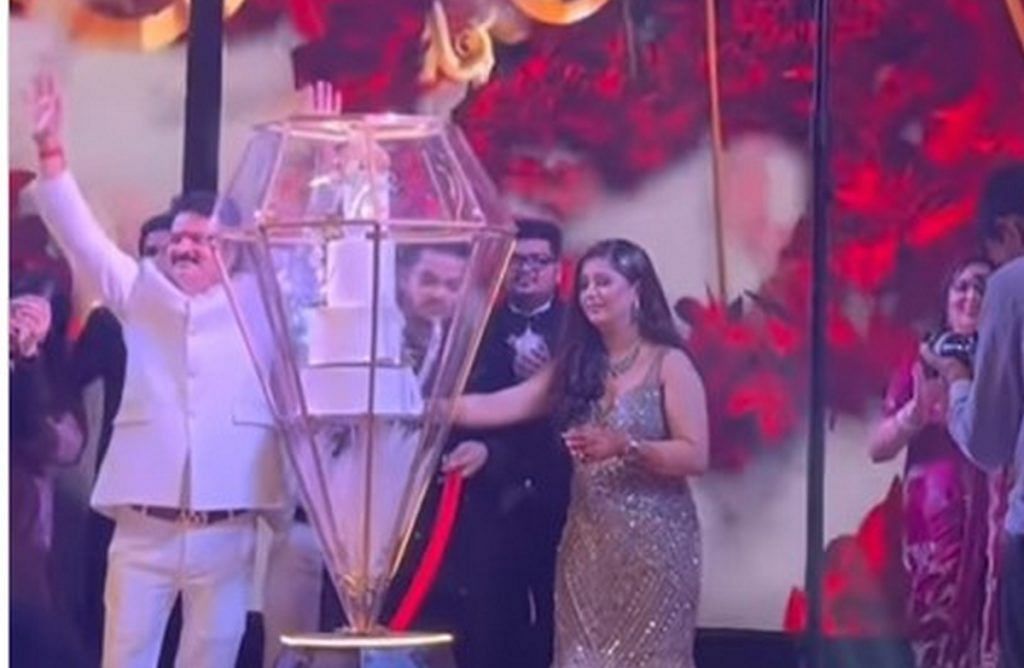
Pivot from paan masala
Kanpur’s culture of extravagance began with the paan masala industrialists, who still fuel much of the city’s wealth. But the new generation is diversifying into more socially acceptable businesses, with real-estate being a hot favourite. There is also a class of local tycoons who haven’t made their money through paan masala—like UP’s “richest” man Murali Gyanchandani— but share the same taste for luxury.
Their flamboyant lifestyles often create a jarring contrast against the backdrop of Kanpur’s mills and factories. On a lane in the industrial part of town, a truck belches smoke, factory plumes fill the air, and workers shout in frustration as they toil to get trucks out of an assembly unit. Amid this dust and chaos sits a gleaming white Porsche Cayenne, untouched by the surrounding commotion.
The car belongs to the managing director (MD) of a leading spice manufacturer with roots in Kanpur and a top Bollywood star as its brand ambassador.
“When my father and his partner began in the 1980s, we had limited resources. Now we’ve opened Asia’s biggest spice manufacturing plant,” said the MD, a subtle Armani Exchange logo on his shirt. He prides himself on not being in the paan business.
“My family took an oath: we’ll never make anything that’s injurious to health,” he said.
But finding someone in Kanpur who doesn’t chew paan masala or a variant is rare. Every few metres, someone tears open a tiny packet and pours its contents into their mouth. This habit has even coloured how Kanpuriyas are perceived in the popular imagination—they are often caricatured on Instagram reels and TV shows for their speech pattern, which is supposedly affected by constant tobacco chewing. It’s difficult to go very far without encountering Vimal Pan Masala billboards featuring Shah Rukh Khan.
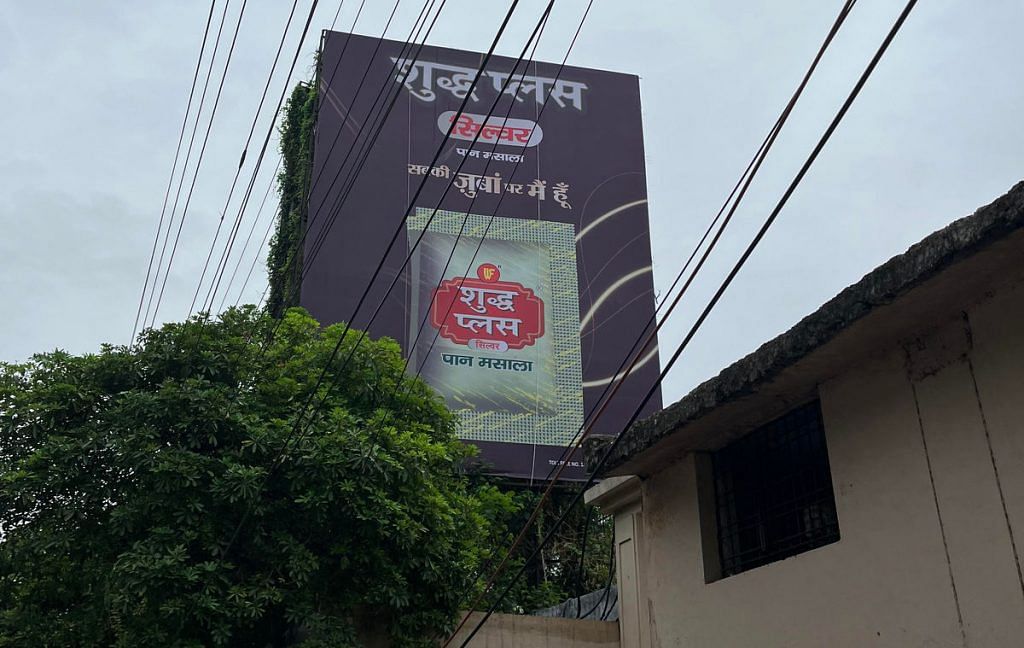
Slowly but surely, however, the paan masala industry is changing. Many of the largest companies, like the Kotharis of Pan Parag, have moved their factories to places like Gurgaon and Noida. Although still maintain bases in Kanpur, they aren’t investing or generating employment like they used to.
Heat from the Income Tax (IT) Department has made many in the business uneasy and looking to pivot or diversify. The latest high-profile raid was in March, against KK Mishra, owner of Banshidhar Tobacco Company, and his son Shivam. The IT department seized a Lamborghini, Rolls Royce, and Ferrari, among other luxury vehicles reportedly worth about Rs 60 crore. In 2021, about Rs 196 crore in cash—allegedly unaccounted for—was recovered from the premises of the paan masala company Shikhar.
There’s regulatory tightening as well. Earlier this year, the Central Board of Indirect Taxes and Customs (CBIC) announced a new registration and monthly return filing procedure for paan masala and gutkha companies to improve record-keeping and GST compliance.
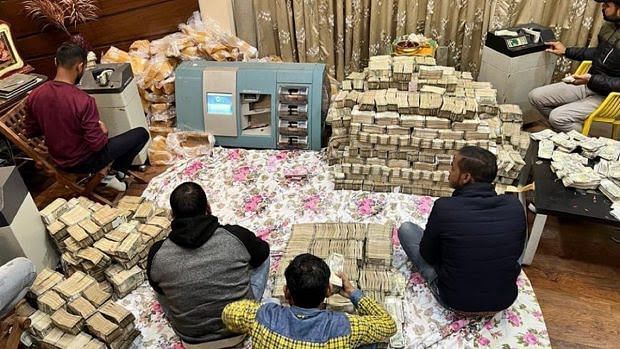
In 2013, IT raids collected Rs 150 crore from the manufacturing units of eight paan masala businesses. One of them was a leading brand whose founder started with a paan shop in the 70s and 80s, before perfecting and marketing his own blend from 1987.
“I came from nothing,” the founder said, perched on a stool in the pooja room of his home, asking not to be named. “My father used to work in a cotton mill. I had four brothers, two sisters, and I was the only earning member of the family. I was studying in class 11 when my eldest brother died.”
His house in Tilak Nagar is a symphony in marble, but he still dresses simply in a vest and dhoti. His son, on the other hand, is dressed in a red Armani Exchange polo and runs a real-estate business in Kanpur.
But though the founder is part of the old guard, he’s pivoting too. A scar bisects the lower half of his face—a reminder of his treatment for mouth cancer in 2019. After that experience, he decided to pursue a “moral” business, turning to astrology and Ayurveda.
The paan masala brand still exists but is run by other family members. Their products never made much of a dent in Kanpur, but continue to do well in Lucknow, as well as parts of Eastern UP, Rajasthan, and Hyderabad.
“Every man has their own market. Once that’s established, no one else can enter,” he declared. By the time he started his brand, he claimed, Pan Parag had already captured Kanpur’s taste buds.
He still visits the factory, which now also makes Ayurveda skincare products. His daughter-in-law, who handles marketing and branding, refers to him as a “fragrance king”. After coming from “nothing,” his entire family now lives in a lavish bungalow, with high boundary walls and a fleet of cars—at least five are parked in the driveway.
Among many Kanpur locals, however, a sense of wistfulness remains about what the paan masala industry brought to the city.
“If the paan masala industry had stayed in Kanpur, the scene here would’ve been completely different,” said Ashok Taneja, who runs a small chemical business. “There’d be more employment.”
Also Read: Agra is No. 3 Smart City. Funds spent on potholes, parks, paintings, traffic jams, zardozi
Waiting for Kanpur to catch up
The older generations of Kanpur have toiled and their children are reaping the benefits. Dressed head to toe in designer labels—Versace polo t-shirts, Gucci sneakers—they look ready for Page 3 events. Yet, there aren’t enough upscale bars or clubs in Kanpur for them to truly indulge themselves.
“Whenever a good club opens in Kanpur, it invariably closes for some reason or the other. Right now, there’s only Como (a resto-bar in the cantonment area) and the crowd isn’t too good,” said the son of a businessman, rolling his eyes. He’s home for the summer holidays and getting bored. Another club that he and his friends used to frequent, is currently under renovation.
Still, these inconveniences have to be endured since duty calls.
“My dad couldn’t go to university because of the business. Now it’s doing well and he wants to expand. So, I have to come back,” he said.
Growing up, he added, income tax raids were a common topic. They knew who was raided, what was taken, and what wasn’t. The March raid on Shivam Mishra the scion of Banshidhar Tobacco Company, is still a hot topic.
“A lot of our friends’ houses have been raided over the years. Many years ago, mine was too,” he shrugged. “They didn’t find anything though.”
Despite spending most of the year away from Kanpur, there’s pressure to keep up socially, he complained. When a friend argued that life went on as usual despite driving a 10-year-old car and not throwing a party in ages, he had a ready reply: “But then they talk behind your back.”
That’s why he prefers Delhi. Even if someone’s driving the fanciest cars, they are still a dime a dozen there, according to him. In Kanpur, it’s conspicuous. In Delhi, if there’s traffic, he claims he’d take the metro. But not here, where the class bias runs deep.
Beyond the lacklustre nightlife, another common complaint is that Kanpur lacks quality schools and sports facilities.
“My daughter’s a state-level badminton player. But there aren’t enough facilities for her here, so we have to go to Delhi a couple of times a month,” said the daughter-in-law of a paan masala family.
The spice company MD and his wife have sent their 13-year-old twin sons to Doon School in Dehradun. Their admission was a proud moment for the family. He called Doon the “epitome” of boarding.
“It wasn’t an easy decision. There’s no luxurious life there. If you’re from a small town, you need that extra padding,” he said. “There are so many luxuries in Kanpur. If they grow up and become spoiled brats, it’s not their fault.”
His younger brother’s son, too, has been sent to a boarding school in Gurgaon.
As the MD talks about his children and nephew, he has a serene smile on his face. They are at a stage in their lives when they are being sent out into the world. He himself has to travel constantly, with the spice brand soon to be launched abroad, but Kanpur is home.
And it now has just about enough to keep him satisfied. There’s a golf course in the cantonment area, and a decent mall—Z Square. Designer stores are few and far between, but according to the manager at Tommy Hilfiger, they’ve begun to make sales averaging about Rs 32 lakhs each month. “But it’s not like Emporio,” the MD said, referring to Delhi’s luxury hotspot.
Despite the allure of bigger cities, many younger Kanpur heirs don’t express a pressing desire to leave either.
“Call it childhood attachment or whatever, but we like it here,” said the college-going son of a Kanpur businessman. “And we travel a lot.”
(Edited by Asavari Singh)



